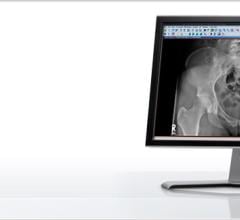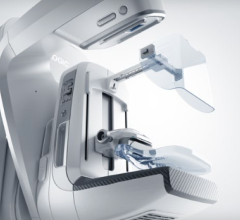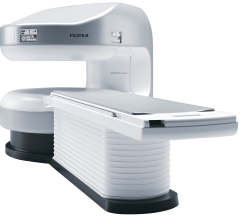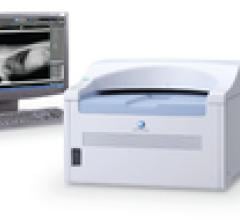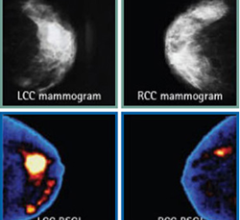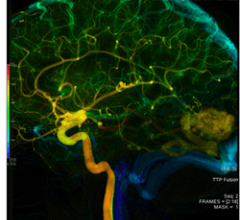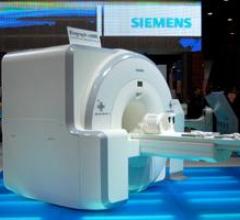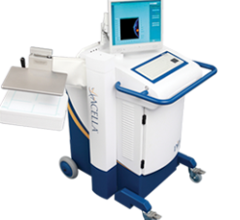June 16, 2011 — Imaging Healthcare Specialists (IHS) recently adopted Image Wisely, a program encouraging practitioners to avoid unnecessary ionizing radiation procedures and to use the lowest optimal radiation dose for necessary studies.
Imaging solutions provider TeraRecon will highlight new developments for the iNtuition enterprise advanced visualization platform at the International Symposium on Multidetector Row Computed Tomography, hosted by the International Society of Computed Tomography (ISCT) June 13-16, 2011 at the Hyatt Regency in San Francisco.
June 15, 2011 — Carestream Health showcased productivity-enhancing embedded 3-D tools on its Carestream Vue picture archiving and communication system (PACS) workstation at the annual “Workstation Face-Off” during the International Symposium on Multidetector-Row Computed Tomography. The 2011 event was held on Tuesday, June 14, in San Francisco.
While most women understand the importance of health screenings, an estimated 72 million have missed or postponed a ...
June 15, 2011 — DICOM Grid, a global cloud platform for medical imaging applications, showcased HL7 integration capabilities, image-exchange content notification and updates to its zero-footprint image viewer at SIIM 2011, the annual meeting of the Society for Imaging Informatics in Medicine.
June 14, 2011 — Merge Healthcare announced today that it has signed a definitive agreement to acquire Ophthalmic Imaging Systems (OIS), which provides digital imaging and informatics solutions for ophthalmology and other medical specialties.

SPONSORED CONTENT — Fujifilm’s latest CT technology brings exceptional image quality to a compact and user- and patient ...
June 13, 2011 – Today, GE Healthcare Medical Diagnostics announced results of a study evaluating the cardiopulmonary safety of Optison (Perflutren Protein-Type A Microspheres Injectable Suspension, USP), a Food and Drug Administration (FDA)-approved diagnostic ultrasound contrast agent for use in improving suboptimal echocardiograms.
Fujifilm’s APERTO Lucent is a 0.4T mid-field, open MRI system addressing today’s capability and image quality needs ...
The U.S. Food and Drug Administration (FDA) gave 510(k) clearance to Konica Minolta Medical Imaging’s Regius Sigma tabletop computed radiography (CR) reader. The reader is offered as an affordable solution for lower volume clinics and practices, including orthopedic, chiropractic and veterinary.
June 14, 2011 – Positron, a molecular imaging company specializing in the field of nuclear cardiology, is relocating its corporate headquarters, research and development and product manufacturing facilities to Noblesville, Ind. Positron also plans to develop a high-energy 70 MeV cyclotron project and radiopharmaceutical manufacturing facility, also to be located in Noblesville.
June 14, 2011 – Definitive proof of an adverse effect of chronic marijuana use revealed at SNM’s 58th annual meeting could lead to potential drug treatments and aid other research involved in cannabinoid receptors, a neurotransmission system receiving a lot of attention. Scientists used molecular imaging to visualize changes in the brains of heavy marijuana smokers versus non-smokers and found that abuse of the drug led to a decreased number of cannabinoid CB1 receptors, which are involved not only in pleasure, appetite and pain tolerance, but also in a host of other psychological and physiological functions of the body.
SPONSORED CONTENT — Fujifilm’s latest CT technology brings exceptional image quality to a compact and user- and patient ...
The American Society of Echocardiography (ASE) and lifeIMAGE today announced a partnership that will give ASE members the ability to exchange medical images and data with anyone, anywhere.
June 14, 2011 – Accuray announced that it has completed its previously announced acquisition of TomoTherapy. The combined company is focused on developing, manufacturing and selling personalized treatment solutions that revolve around the patient.
June 14, 2011 —A study revealed at SNM’s 58th annual meeting is comparing the breast-tumor detection capabilities of two very different imaging technologies — breast-specific gamma imaging (BSGI), which provides functional images of breast physiology, and ultrasound — for women with complex breast imaging cases that require further evaluation. Many women who have dense breast tissue (radiodense breasts) are difficult to image using mammography, currently the gold standard of breast imaging. For women whose mammograms are not clear enough to determine whether cancer is present, support methods such as BSGI and ultrasound are used to answer any remaining diagnostic questions.
SPONSORED CONTENT — EnsightTM 2.0 is the newest version of Enlitic’s data standardization software framework. Ensight is ...
June 14, 2011 –FDA has given clearance to AngioViz, a GE application that gives doctors a new visualization of vascular flow on a single image to help them make important decisions during complex interventional radiology procedures.
Expanding upon its radiopharmacy platform, GE Healthcare is introducing new tracers to the FASTlab multi-tracer platform, an advanced positron emission tomography (PET) chemistry system on which the company is also developing PET proprietary agents. The system offers a number of significant enhancements to address the ever-evolving challenges of tracer production. With the addition of three new cassettes, users can access and produce FDG phosphate formulation, NaF, FMISO (HPLC free), FLT (HPLC free) and FDG citrate formulation (equivalent to TRACERlab MX standard formulation) on the same platform. For more information: www.gehealthcare.com
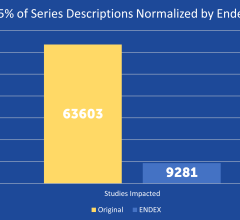
SPONSORED CONTENT — EnsightTM 2.0 is the newest version of Enlitic’s data standardization software framework. Ensight is ...
A study presented at the Society of Nuclear Medicine's (SNM) annual meeting outlines a PET imaging method that reduces “motion artifacts” or image blurring arising from respiratory motion. Non-gated PET imaging with 4-D computed tomography (CT) may be useful for imaging patients who do not benefit from the use of respiratory gating, most notably patients with erratic breathing.
June 10, 2011 – The U.S. Food and Drug Administration (FDA) granted Siemens Healthcare 510(k) clearance for the Biograph mMR, the first system worldwide to enable simultaneous whole-body acquisition of data from magnetic resonance (MR) and positron emission tomography (PET).
June 10, 2011 – Viztek debuted an exam turnaround time (TAT) management feature for its Opal-RAD PACS. Designed to streamline the workflow of teleradiology practices, the feature prioritizes exams based on a client’s contracted time to perform study reading. The feature uses a color-based system to notify radiologists of the remaining time before a scheduled reading must be completed. After users input reading time parameters for each facility, worklist population and priority level is fully automatic.
June 10, 2011 – Dilon Diagnostics introduced the U.S. Food and Drug Administration (FDA)-cleared Dilon 6800 Acella gamma camera system this week at the Society of Nuclear Medicine (SNM) annual meeting in San Antonio, Texas. To complement the Dilon 6800 standard field-of-view imaging system, the new camera will feature a much larger molecular breast imaging (MBI), which will make Dilon the first company in the industry to offer customers a choice in detector sizes.
June 10, 2011 — At the Society of Nuclear Medicine’s 58th Annual Meeting in San Antonio, June 4-8, Cardinal Health previewed The Center for the Advancement of Molecular Imaging (The Center), its new, first-of-its-kind innovation laboratory, which it plans to open in July 2011.
June 10, 2011 – 3DISC has received 510(k) clearance from the U.S. Food and Drug Administration (FDA) to market its line of FireCR Medical Scanners and QuantorMed Imaging Software in the United States. The FireCR Scanners can be quickly upgraded to higher speeds with a simple smart card update, giving users flexibility to start with an entry?level scanner and increase productivity as their needs change.


 June 16, 2011
June 16, 2011 

